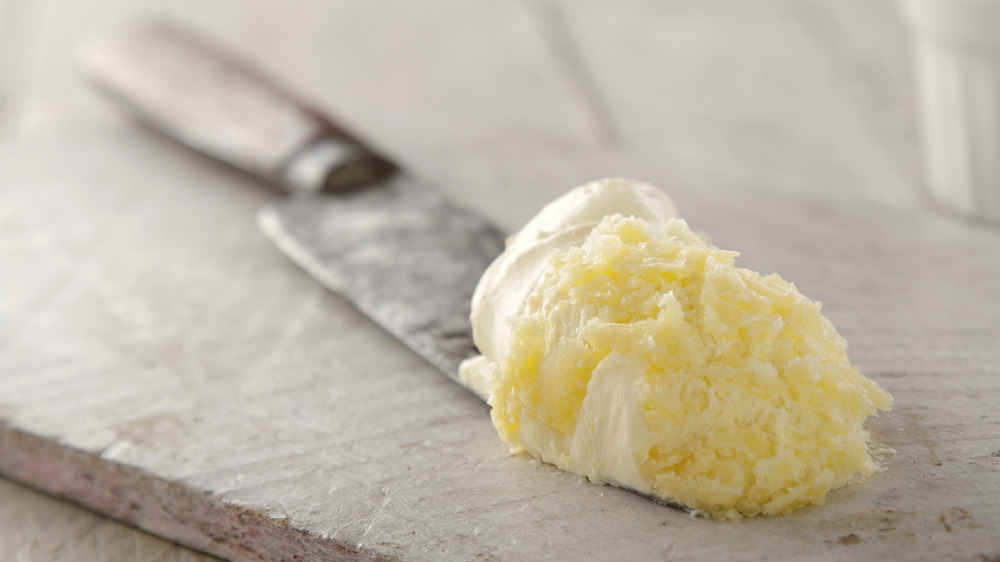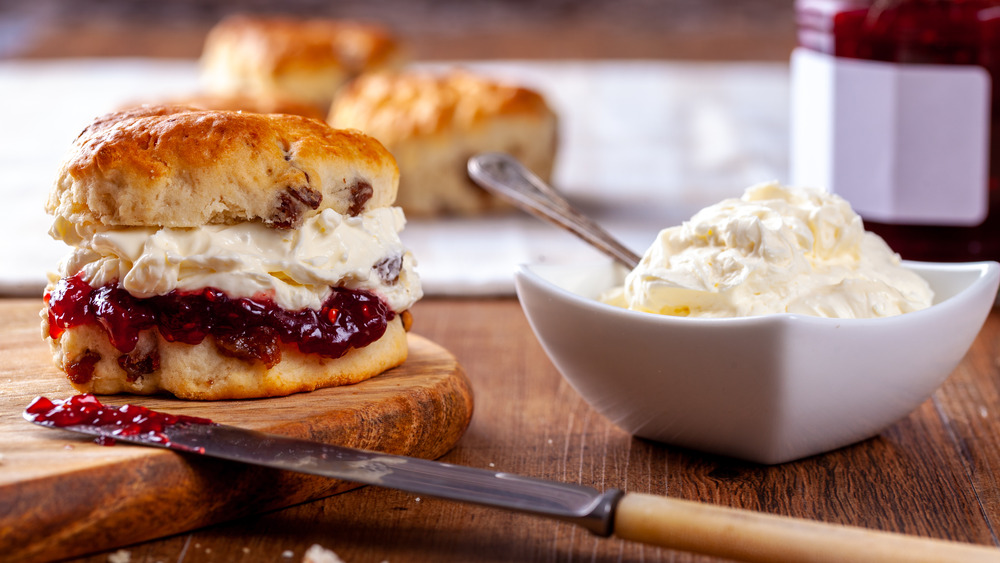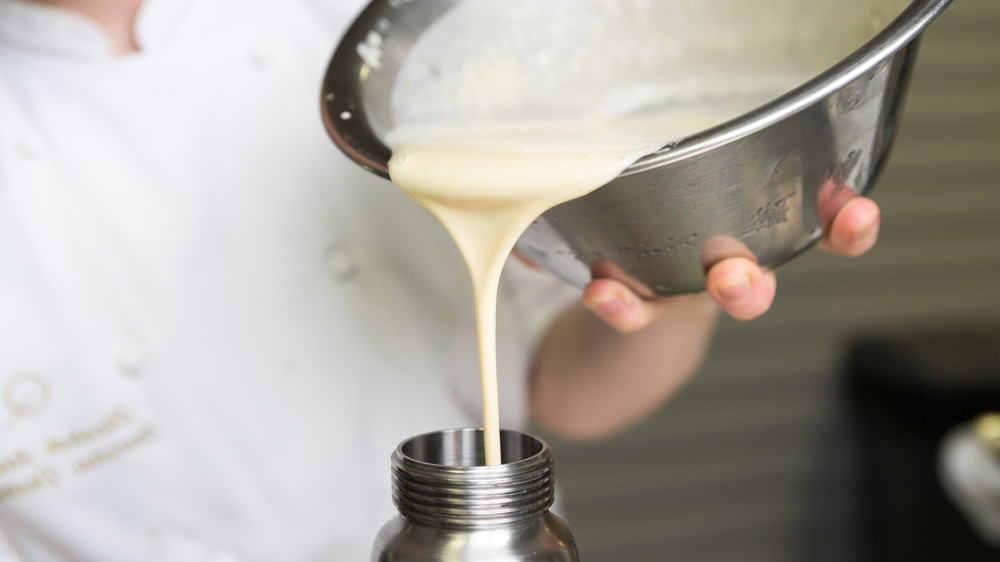What Is Clotted Cream And What Is It Used For?
A quintessential British dish, clotted cream is a thick, sweet, and smooth cream typically served with desserts. It has a long history that stems from Devon and Cornwall and some historians believe that it was first brought to England around 2000 years ago from Phoenicia (via British Food: A History). Back then, the settlers clotted the cream to keep milk from spoiling. By heating the cream then removing the liquid whey, the process left a silky butterfat, which drastically slowed the growth of bacteria. British Food: A History says the people of Devonshire thought highly of the cream; and local legend said that "not even a witch's breath could turn it sour."
Traditional recipes call for unpasteurized full-fat cow's milk, though most modern recipes call for using heavy cream. For the sticklers out there, in order for it to be considered genuine clotted cream, the milk has to contain around 55 percent butterfat, according to Nutrition Advance.
Clotted cream has a slightly sweet flavor that's comparable to whipped cream and butter in terms of its richness. But before you nosh, Nutrition Advance warns that clotted cream is high in calories and fat, so just be conscious of portions.
How to use clotted cream
The most common pairing for clotted cream is a scone along with some fruit jam, but the British specialty condiment is also traditionally served with muffins and quick bread, according to Epicurious. Think of clotted cream as a combination whipped-cream-meets-butter substitute.
You can also use clotted cream the same way as you would use heavy or whipping cream — view it as a creamy addition to sweet or savory dishes. BBC Food suggests placing a spoonful of cream over fruit or berries for a light but sumptuous dessert.
While most recipes call for clotted cream to be spread thickly on a scone, plopped on fresh berries, or served in a small tin next to muffins, more cooks are starting to use the ingredient in a variety of other dishes. You can use clotted cream in ice cream, fudge, or even veal escalope with mushrooms (via Tasmanian Food Company).
How to make clotted cream at home
Clotted cream recipes, no matter what the origin or method, all call for the same thing: low heat and time. You can make clotted cream in your Instant Pot (via That Skinny Chick Can Bake) or in your oven, as The View From Great Island explains. Macheesmo even reports that there are recipes for making clotted cream in your slow cooker.
Nutrition Advance states that the process includes warming the cream for several hours until it lifts to the surface and clots. This thick cream is then gently skimmed off the top. Because clotted cream requires only two ingredients, the website cautions its readers to use the best cream they can find, as the quality will affect the taste of the end result.
Which leaves the question: What do you do with the leftover whey from making clotted cream? The View From Great Island suggests using the liquid in smoothies or oatmeal.


